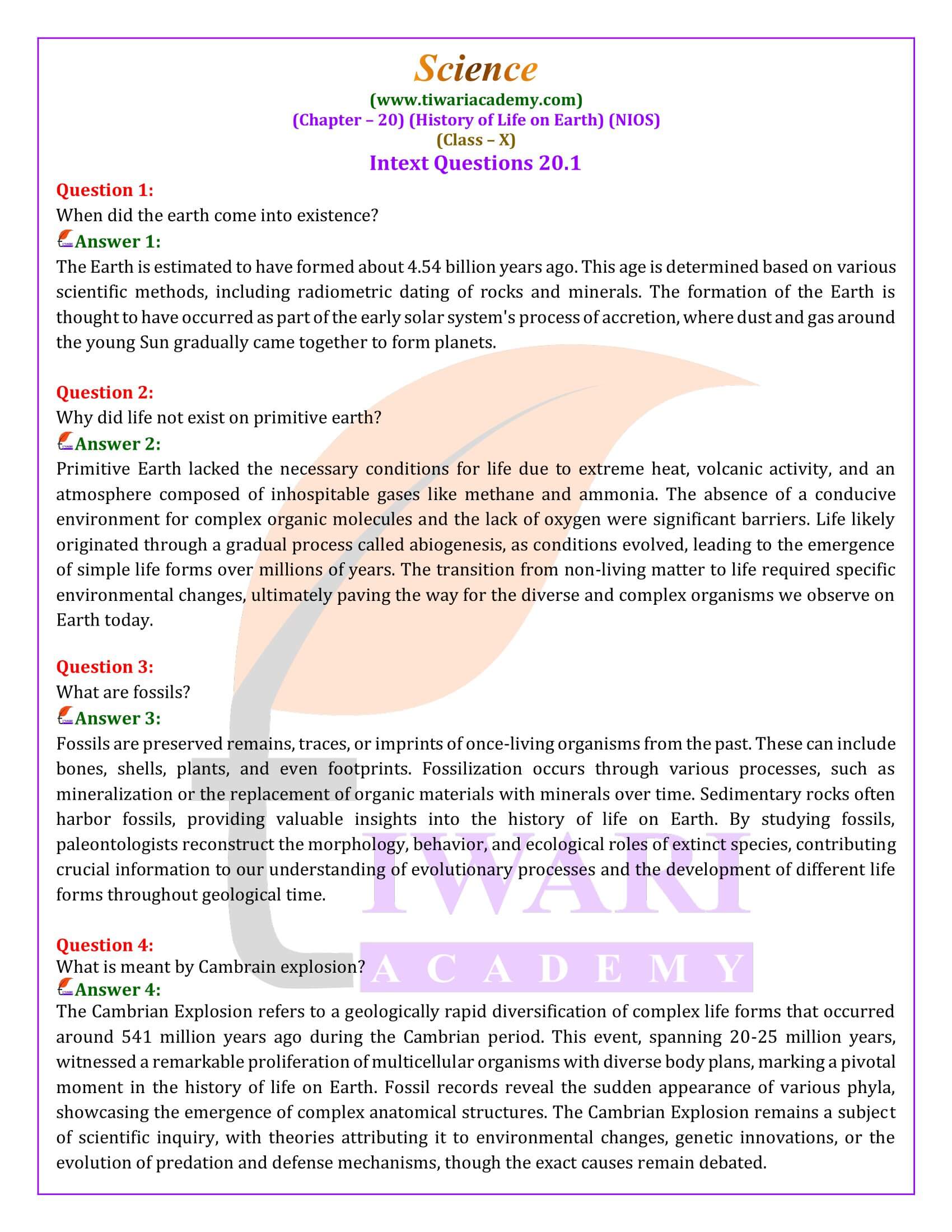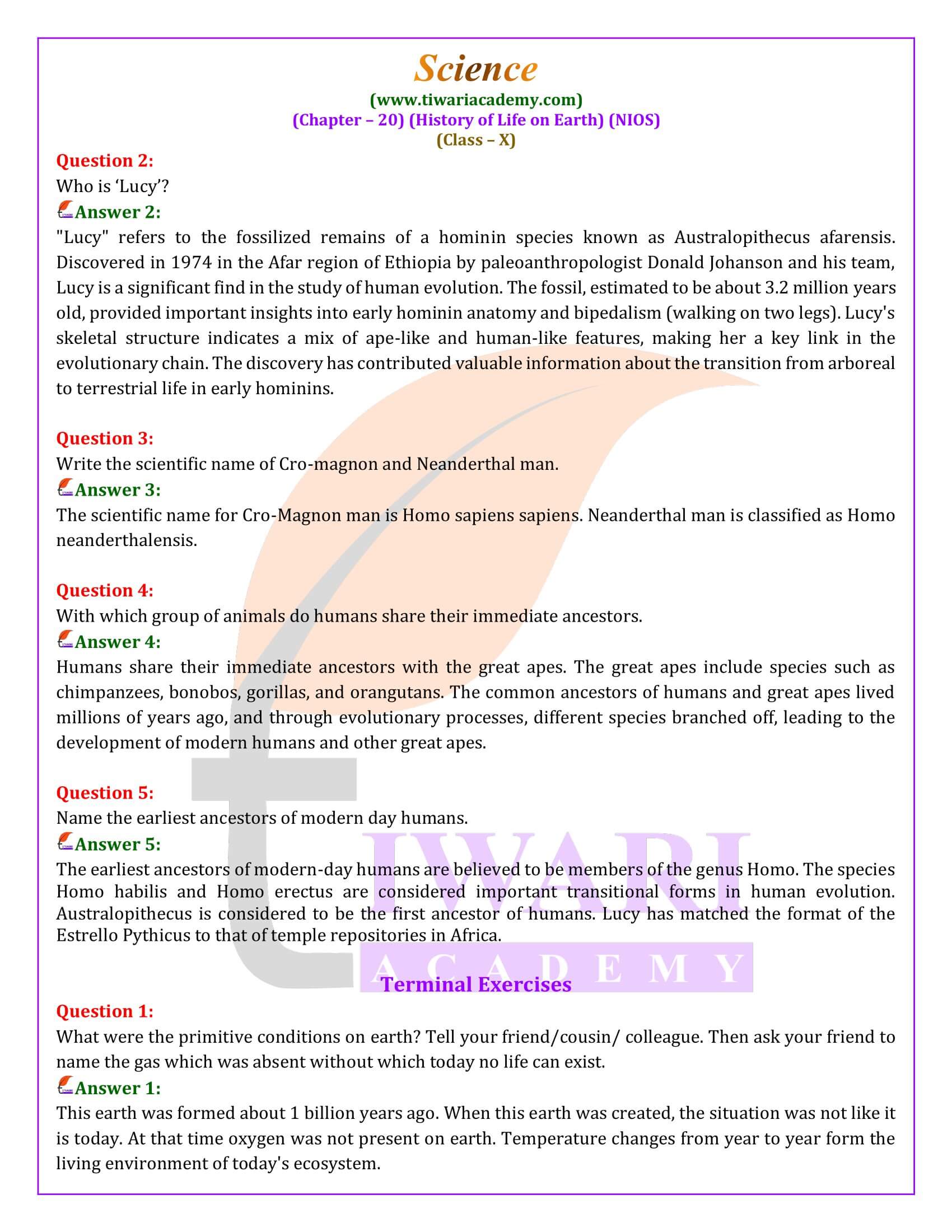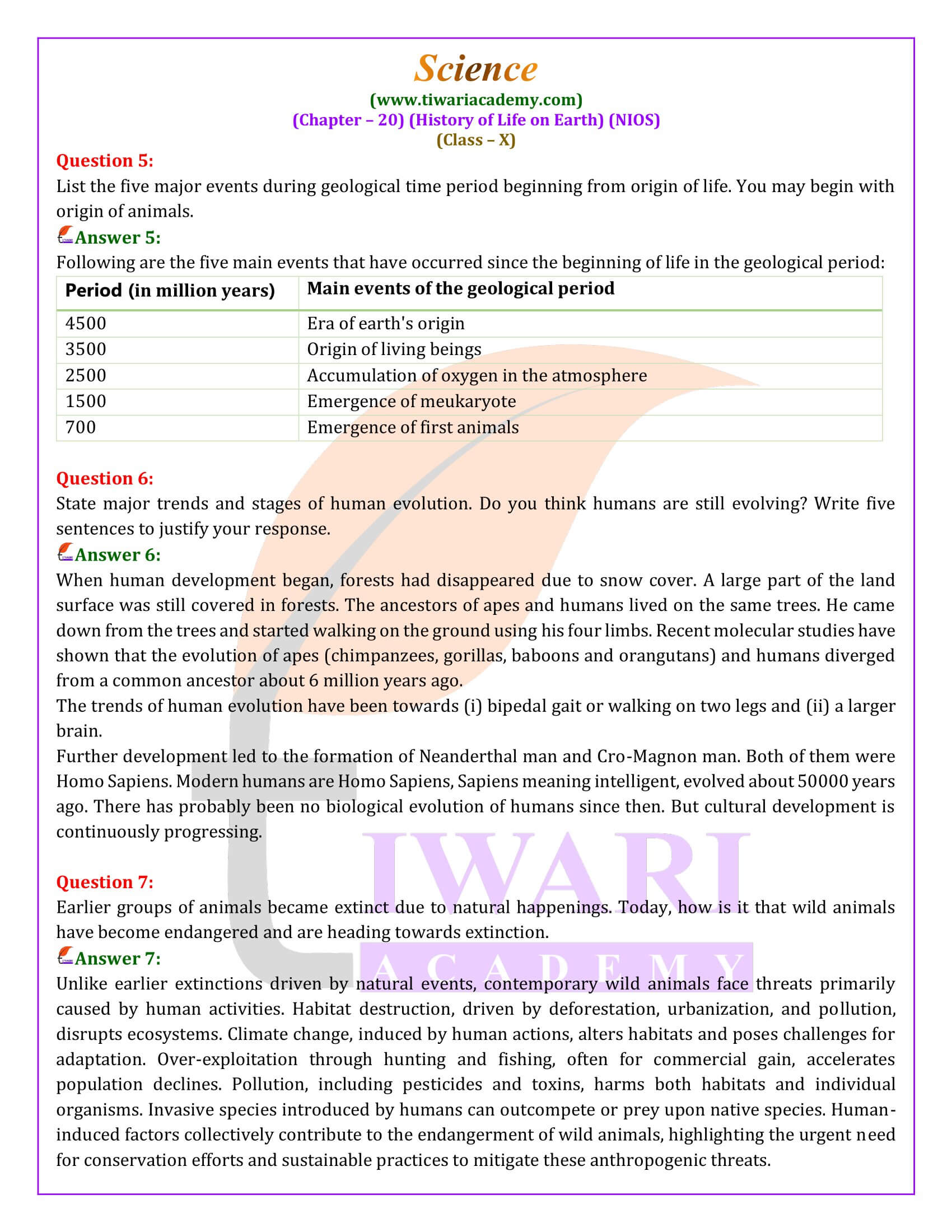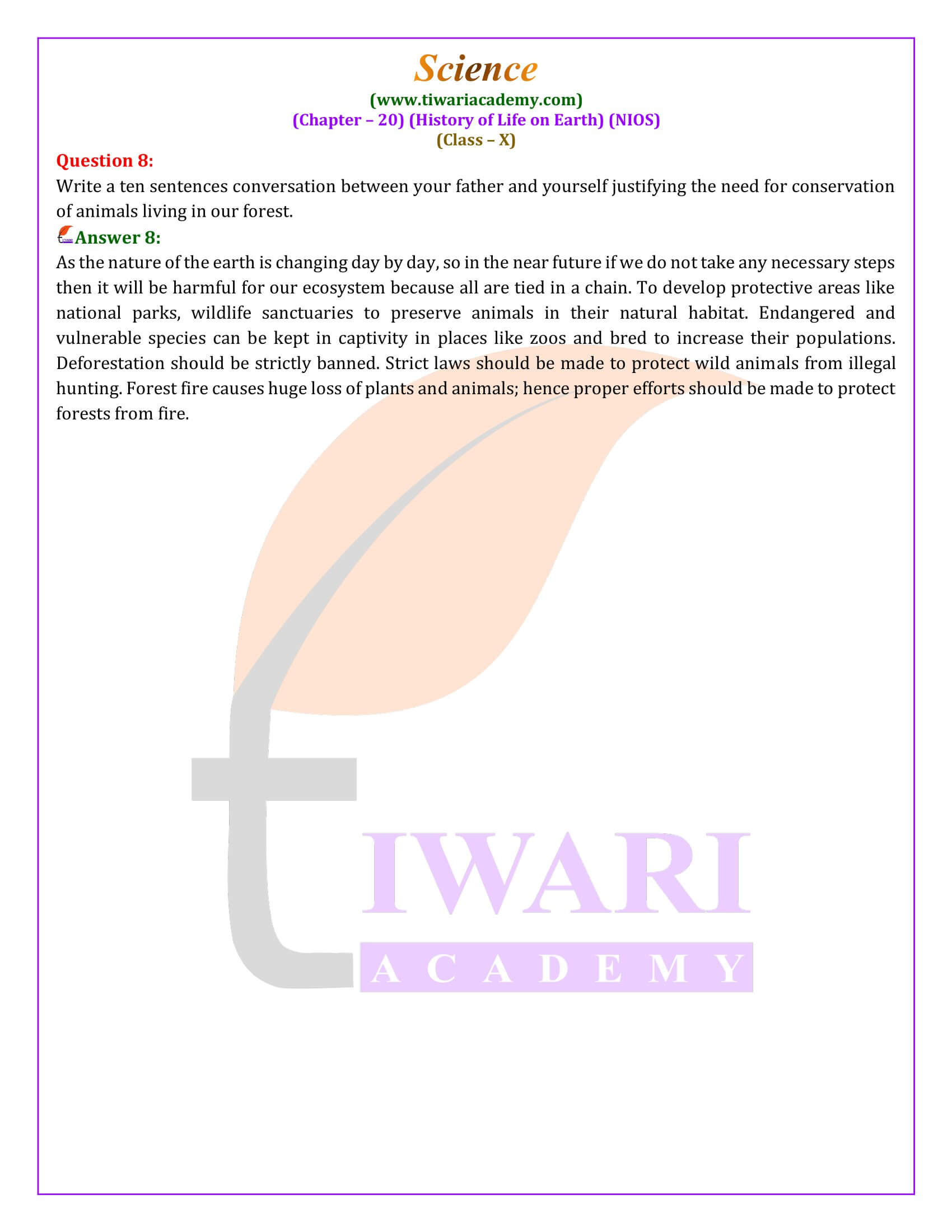NIOS Class 10 Science Chapter 20 History of Life on Earth in Hindi and English Medium updated for new academic session 2025-26 free to use. The revised NIOS Class 10 Science Chapter 20 question answers explain the entire chapters to make easy to understand.
NIOS Class 10 Science Chapter 20 History of Life on Earth
The Fascinating Journey of Life on Earth
NIOS Class 10 Science Chapter 20 History of Life on Earth offers a comprehensive exploration into the origins and evolutionary trajectory of life on our planet. It provides a blend of theoretical insights and empirical evidence to narrate the transformation of Earth from a hostile environment to a diverse ecosystem capable of supporting myriad life forms.
Primitive Earth and the Dawn of Life
Initially, Earth was a molten sphere with extreme temperatures and a toxic atmosphere devoid of oxygen, consisting primarily of methane, ammonia, and hydrogen cyanide. NIOS 10th Science Chapter 20 outlines the stark conditions of primitive Earth, setting the stage for the emergence of life. The chapter 20 delves into the theories of life’s origin, particularly highlighting the contributions of J.B.S. Haldane and A.I. Oparin. They proposed that life began in a ‘primordial soup’ of organic compounds in shallow seas, catalyzed by chemical reactions in a reducing atmosphere. This hypothesis was experimentally supported by Stanley Miller and Harold Urey, who replicated the synthesis of amino acids, fundamental building blocks of life, under laboratory conditions mimicking early Earth.
Evolution through Natural Selection
The narrative progresses to detail Charles Darwin’s monumental contributions to understanding biodiversity through natural selection. Darwin’s theory, based on his observations and deductions from the voyage of HMS Beagle, suggests that species evolve over generations through variations that enhance survival and reproductive success in given environments. This chapter not only covers Darwin’s discoveries but also extends to Neo-Darwinism, which integrates Mendelian genetics with Darwinian evolution, illustrating the modern synthetic theory of evolution.
The Diversification of Life
Significant is the phenomenon known as the Cambrian explosion, a pivotal moment around 540 million years ago when multicellular life forms diversified dramatically in a relatively short geological period. This event marked the emergence of major animal phyla and the subsequent evolutionary developments leading to the rich biodiversity we observe today. NIOS Class 10 Science Chapter 20 emphasizes the gradual accumulation of oxygen in the atmosphere through photosynthesis, which was critical for the evolution of complex life forms.
Human Evolution
In later sections of NIOS Class 10 Science Chapter 20, the focus shifts to human evolution, detailing the lineage from our last common ancestors with apes to modern Homo sapiens. This journey through human history highlights key stages such as the emergence of bipedalism, larger brain sizes, and the eventual cultural developments that distinguish humans from other species. The narrative is careful to point out that while biological evolution has somewhat plateaued for humans, cultural evolution continues at a rapid pace.
Educational Activities and Reflection
NIOS 10th Science Chapter 20 is interspersed with interactive activities designed to engage learners in visualizing and understanding the concepts discussed. These activities range from constructing timelines to role-playing evolutionary stages, thereby enriching the educational experience. Furthermore, reflection questions prompt readers to think critically about the ongoing impact of human activities on biodiversity and the importance of conservation.
History of Life on Earth provides a detailed, educative look at the processes that have shaped the diversity of life on our planet. It encapsulates the scientific quest to unravel the mysteries of life’s origins and highlights the interconnectedness of all living things through the lens of evolutionary biology. NIOS Class 10 Science Chapter 20 not only educates but also inspires appreciation for the natural world and our place within it.








